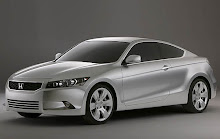 Lying in the north of the desert State, the city is dotted with scores of sand dunes. Bikaner retains the medieval grandeur that permeates the city's lifestyle. More readily called the camel country; the city is distinguished for the best riding camels in the world and hence boasts of having one of the largest Camel Research and Breeding farms in the world. The ship of the desert is an inseparable part of life here. A camel besides being a mode of transport, also works on wells.
Lying in the north of the desert State, the city is dotted with scores of sand dunes. Bikaner retains the medieval grandeur that permeates the city's lifestyle. More readily called the camel country; the city is distinguished for the best riding camels in the world and hence boasts of having one of the largest Camel Research and Breeding farms in the world. The ship of the desert is an inseparable part of life here. A camel besides being a mode of transport, also works on wells. The history of Bikaner dates back to 1486 when a Rathore prince, Rao Bikaji founded his kingdom. Bikaji was one the five sons of Rao Jodhaji the illustrious founder of Jodhpur. But Rao Bikaji was the most adventurous of them. It is said that an insensitive remark from his father about his whispering in the Durbar provoked Bikaji to set up his own kingdom towards the north of Jodhpur. The barren wilderness called Jangladesh became his focal point and he transformed it into an impressive city. He accomplished this task with 100 cavalry horses and 500 soldiers, and established his kingdom on 84 villages abandoned by the 'Shankhlas'. When Bikaji died in 1504 his rule had extended to over 3000 villages.
The strategic location of Bikaner on the ancient caravan routes that came from West/Central Asia made it a prime trade centre in those times. Bikaner stands on a slightly raised ground and is circumscribed by a seven km long embattled wall with five gates. The magnificent forts and palaces, created with delicacy in reddish-pink sandstone, bear testimony to its rich historical and architectural legacy. Surging lanes, colorful bazaars with bright and cheerful folks make Bikaner an interesting experience.
Modern Bikaner is the result of the foresight of its most eminent ruler Maharaja Ganga Singh (1887-1943) whose reformative zeal set the pace for Bikaner transformation from a principality to a premier princely state.
TOURISTS ATTRACTIONS
Junagarh Fort was built by a Mughal army general, Raja Rai Singh, in 1593. The courtyard of the fort along with the balcony, kiosks and windows are perfect examples of the artisanship of that time. The beautiful cutworks and dots on the red stones and the marbles are fascinating. The various parts of the palace-the Dewan-iI-khas, the Phool Mahal, Hawa Mahal, Badal Mahal and Anup Mahal-reflect the glorious architecture of Bikaner.
Lallgarh Palace, built by Maharaja Ganga Singh in memory of his father, is situated 3 km north of Bikaner city. The Rajasthan Tourism Development Corporation as part of their tourism promotion program has converted some portions of the palace to tourist hotels. Other parts of the palace have been converted into a museum named as the Sadul Museum to preserve the glory of the yesteryears of Rajasthan in general and Bikaner in particular.
Ganga Golden Jubilee Museum is one of the best museums of Rajasthan with some fabulous collection of antiques and artilleries.
The Bhandasar Jain Temple, dedicated to the 23rd Jain tirthankara, is also a place worth visiting.
 The Camel Research Farm carries out breeding and training of camels-the only fighting force and medium of transportation in the past.
The Camel Research Farm carries out breeding and training of camels-the only fighting force and medium of transportation in the past.FAIRS & FESTIVALS
To know the local hues and colors of Bikaner, one has to witness the local fairs and festivals.
The Camel Festival, held in the month of January, is the most exciting festival. Competitions related to camels like camel races, milking, dancing, etc., make this festival even more interesting.
Kolayat Festival is the holy festival when the people take a dip in the holy water of the Kolayat Lake. It normally takes place on the full-moon night of the Hindu month Kartik (November).
 Gangaur Festival, dedicated to Goddess Parvati, is an 18-day long spring festival celebrated during the month of April.
Gangaur Festival, dedicated to Goddess Parvati, is an 18-day long spring festival celebrated during the month of April.HOW TO REACH
BY AIR - Bikaner is well connected to the nearby towns and cities of importance. Jodhpur is the nearest airport. The airport is easily accessible by road.
BY RAIL - Bikaner has number of train links to connect it with the major cities of India.
BY ROAD - It is also linked with the big and small cities of India by the national highways and other roadways. We would provide you all India tourist permit vehicles for the local transportations and also for the intercity drives too.

No comments:
Post a Comment